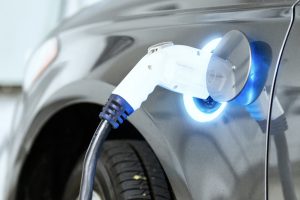- 🚗 New rules for the U.S. EV tax credit limit qualifying options in 2024.
- 💰 Despite fewer qualifying EVs, 2024 guidance allows instant rebate at the point of sale.
- 💡 IRS offers $7,500 tax credit for select BEVs and PHEVs, with a reduced $3,750 credit.
- 🌐 MSRP limits for the tax credit: $80,000 for vans, SUVs, pickups; $55,000 for other EVs.
- 💵 Income limits: $300,000 for married couples, $225,000 for heads of households, $150,000 for others.
- 🏎️ Only five BEVs qualify for the full $7,500 amount, including multiple Tesla configurations.
- 📋 Full list of qualifying BEVs and PHEVs provided by brand, detailing the tax credit amount.
Electric vehicles (EVs) have become an integral part of the automotive industry, revolutionizing transportation with their eco-friendly and energy-efficient features. One significant incentive driving the adoption of EVs in the United States is the federal tax credit, which can amount to $7,500. This article delves into the intricacies of qualifying for the EV tax credit and navigating the eligibility criteria.
Federal Tax Credit Basics
The federal government’s incentive program aims to encourage consumers to embrace EVs and reduce their carbon footprint. The tax credit amount, capped at $7,500, is a compelling motivator for potential EV buyers. However, understanding the eligibility criteria is crucial to maximizing this financial benefit.
Vehicle Eligibility Criteria
To qualify for the full $7,500 tax credit, the EV must meet certain specifications. The vehicle’s battery capacity is a key factor, with a minimum requirement to ensure eligibility. Additionally, only new, purchased EVs qualify, and leased vehicles may have different credit structures.
Navigating the IRS Form 8936
Claiming the EV tax credit involves completing IRS Form 8936, which requires meticulous attention to detail. This section provides a step-by-step guide on how to fill out the form correctly, ensuring a seamless and successful claim process.
Key Sections of Form 8936
Understanding the different sections of the form is vital for accurate completion. From providing vehicle details to calculating the credit amount, each step plays a crucial role in determining the final tax credit eligibility.
Common Pitfalls and How to Avoid Them
While the tax credit is a substantial incentive, potential pitfalls may hinder eligibility. This section highlights common mistakes made by EV buyers and provides insights on avoiding these issues, ensuring a smooth qualification process.
Timing Considerations
The timing of the EV purchase significantly impacts the tax credit amount. Delays in acquiring the vehicle or failing to meet the necessary deadlines can result in a reduced credit or, in some cases, disqualification.
You can see the full list of BEVs and PHEVs that are eligible for the federal tax credit below.
BEVS THAT QUALIFY FOR THE $7,500 TAX CREDIT BY BRAND
CHEVY
- Bolt EUV
- Bolt EV
FORD
- F-150 Lightning Standard Range
- F-150 Lightning Extended Range
TESLA
- Model 3 Performance
- Model Y Rear Wheel Drive
- Model Y All Wheel Drive
- Model Y Performance
- Model X Long Range
BEVS THAT QUALIFY FOR THE $3,750 TAX CREDIT BY BRAND
RIVIAN
- R1S Dual-Motor Large
- R1S Quad-Motor Large
- R1T Dual-Motor Large
- R1T Dual-Motor Max
- R1T Quad-Motor Large
PHEVS THAT QUALIFY FOR THE $7,500 TAX CREDIT BY BRAND
CHRYSLER
- Pacifica PHEV
PHEVS THAT QUALIFY FOR THE $3,750 TAX CREDIT BY BRAND
FORD
- Escape PHEV
JEEP
- Grand Cherokee PHEV 4xe
- Wrangler PHEV 4xe
LINCOLN
- Corsair Grand Touring PHEV
You can see the IRS web page detailing the new requirements here, simply by filtering the “Placed in Service” dropdown menu by this year. The IRS also offers a fact sheet featuring frequently asked questions on the updated guidance.





